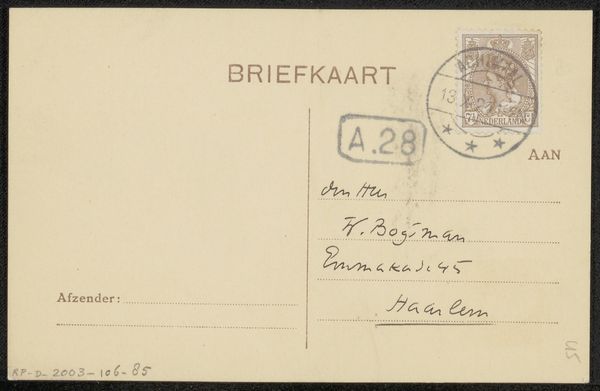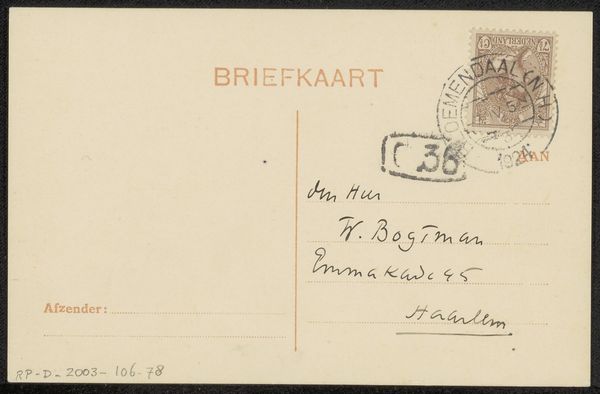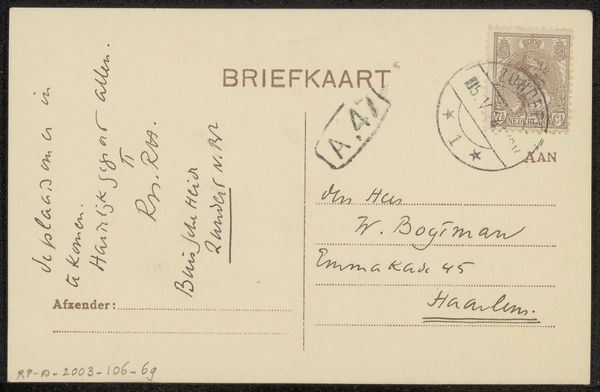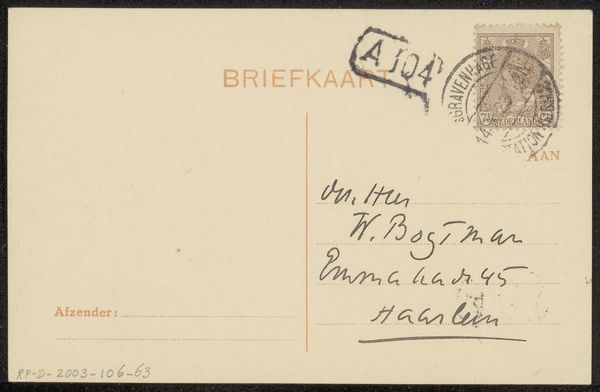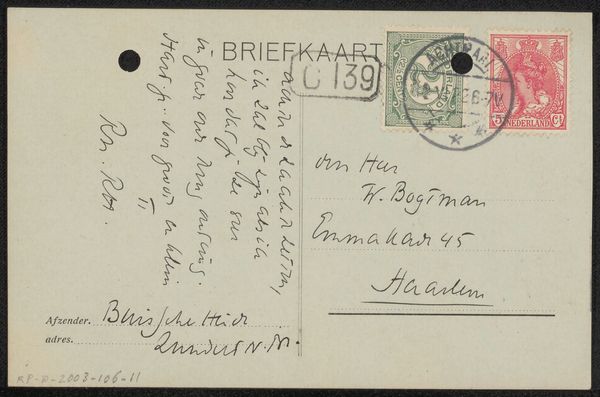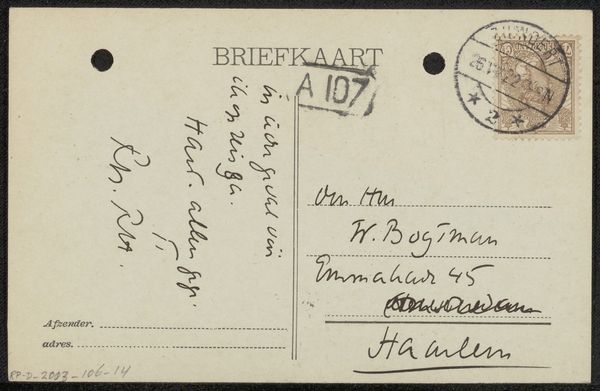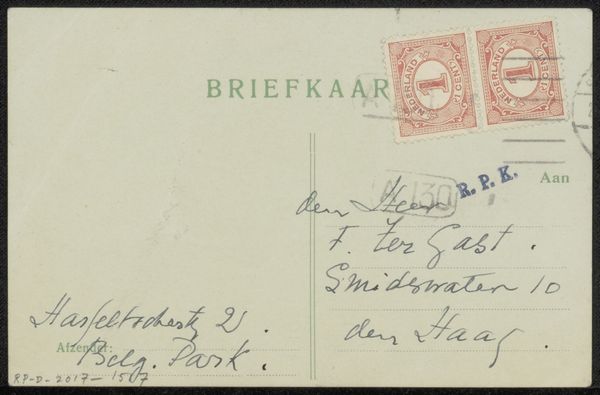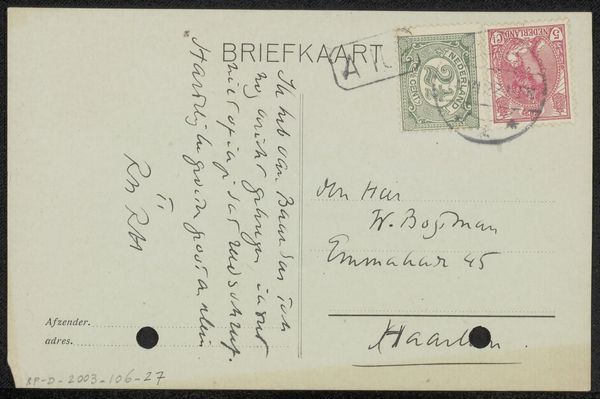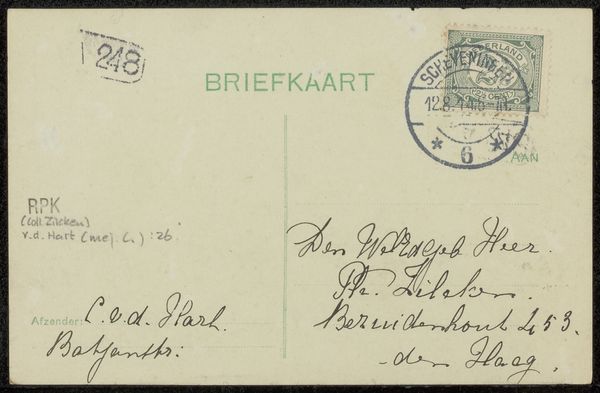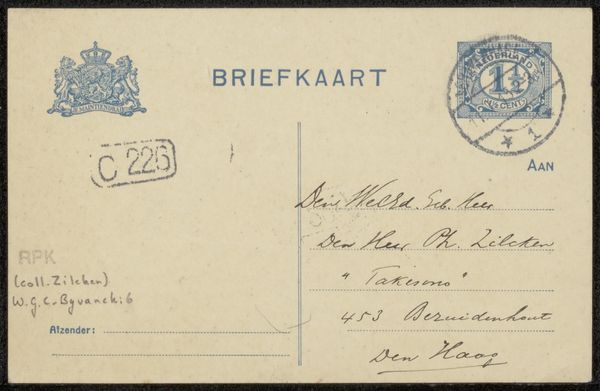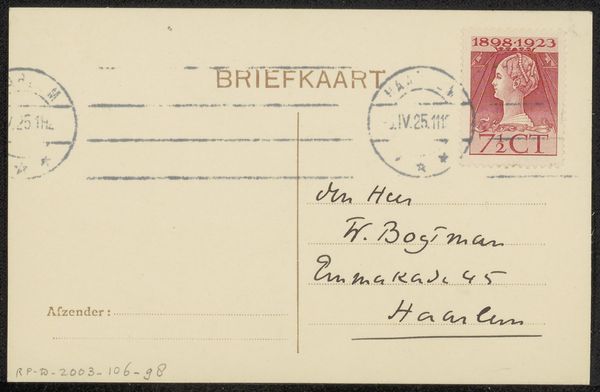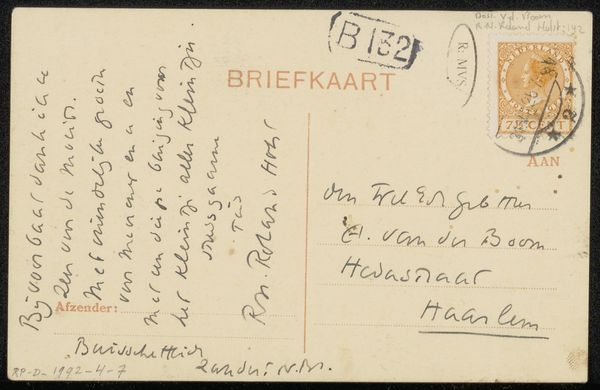
paper, ink
#
paper
#
ink
Copyright: Rijks Museum: Open Domain
Curator: This is a postcard titled "Briefkaart aan Willem Bogtman" potentially from 1924, attributed to Richard Nicolaüs Roland Holst. It's crafted using ink on paper. What are your initial thoughts? Editor: Stark. Severely devoid of figuration, it's the aesthetic of utility – a surface waiting to be adorned, an invitation of sorts. A purely material, utilitarian object shaped by the act of sending and receiving. It speaks volumes, surprisingly. Curator: Indeed. One might analyze the composition of the handwriting, the contrast of the dark ink against the pale paper, the geometry of the postal stamp. Editor: I'm drawn more to the economic reality embedded in its very existence. The paper itself – likely mass-produced – speaks to a growing consumer culture. The ink, a commodity readily available. The stamp, a state-controlled artifact facilitating communication within a specific social and political framework. It is everyday culture. Curator: Certainly, we see the mechanisms of communication, but also the artist's personal expression. The handwriting possesses a unique character, reflecting a conscious stylistic choice. This isn't simply about relaying information. Note also the subtle placement of the stamp; not precisely aligned, lending the piece a sense of immediacy. Editor: Agreed, but that seeming 'immediacy' belies the industrialized infrastructure necessary to produce both the card and the means of delivering it. And the act of address. Note, it isn’t sent ‘by’ but ‘to’, suggesting the passivity in cultural exchange, with capital pulling all the strings, Curator: An interesting reading. Editor: My lens casts value on all aspects of the process. Mass production has made a commonplace event into a form of design worthy of display. What could once only happen to wealthy patrons is now a purchase at the store down the street. Curator: Precisely! This examination reminds us of the interconnectedness of art, social context, and even mundane material processes. Editor: And illuminates the artistic in all objects when they find their stage.
Comments
No comments
Be the first to comment and join the conversation on the ultimate creative platform.
